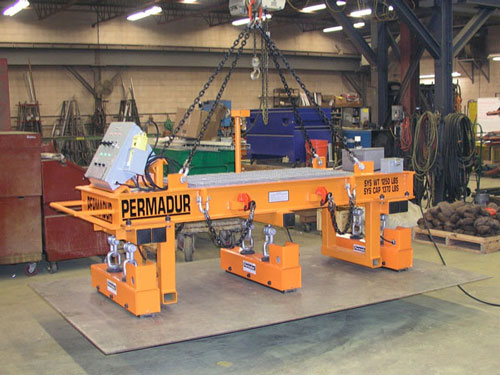Unpacking the Lifting Power
In industrial lifting, the magnets we use are true workhorses, boasting the ability to hoist and manage weights that could range from a modest few hundred pounds to the more awe-inspiring heft of several tons. This isn't by accident; it's by design. We engineer these magnets with a clear purpose, ensuring they can maintain a formidable grip on metal objects, even when there's a layer of something in between – dust, coating, or even an air gap. This kind of tenacity sets them apart, giving us the reliability needed when dealing with a variety of materials in the workplace, especially when you're looking at a pile and need to pick apart just one sheet or item.
The Might of Rare Earth Metals: When it comes to the heart of these magnets, we turn to the heavy hitters in the magnetic field: rare earth metals like neodymium. These materials are the secret sauce that provides a level of magnetic strength that's not just powerful but persistent. This isn't your everyday fridge magnet; it can hold its own in the harsh environments we put them through. And because we're looking for stability over the long haul, we design these magnets to keep their cool and stay strong, even when things heat up.
Designing for Durability: Much thought goes into the design of a material handling magnet. It's not just about making it strong; it's about directing that strength precisely where we need it. We look at the whole magnetic circuit, from the housing to the core, and tweak it until we get a focused field at the contact point. This isn't just about maximizing power; it's about ensuring power doesn't wane with every lift and drop. Energy losses from hysteresis are like the friction we face – it's there, but we're always finding ways to reduce it, ensuring every cycle is as efficient as the first.
Heat Resistance and Longevity: The factory floor isn't exactly a temperate zone, and that's something we always keep in mind with magnet design. We use materials with high Curie temperatures to ensure our magnets don't tap out when the mercury rises. When it comes to staying magnetic, these magnets are built to resist the forces that would otherwise demagnetize them, whether a shock to the system or an errant magnetic field. This resilience is critical because we're not just building for today, but for the thousands of cycles, these magnets will go through.
The magnets we design for material handling aren't just stronger by a few degrees. They're in a completely different league, purpose-built for the industrial stage. This blend of material choice, design precision, and forward-thinking engineering empowers them to perform reliably under the rigors of industrial use.


